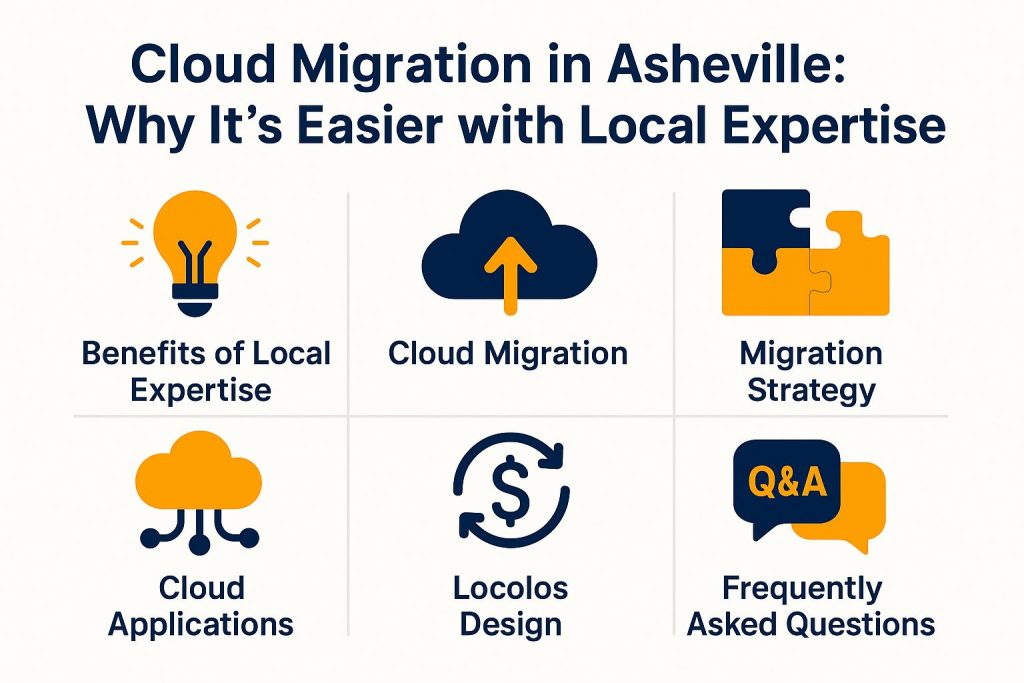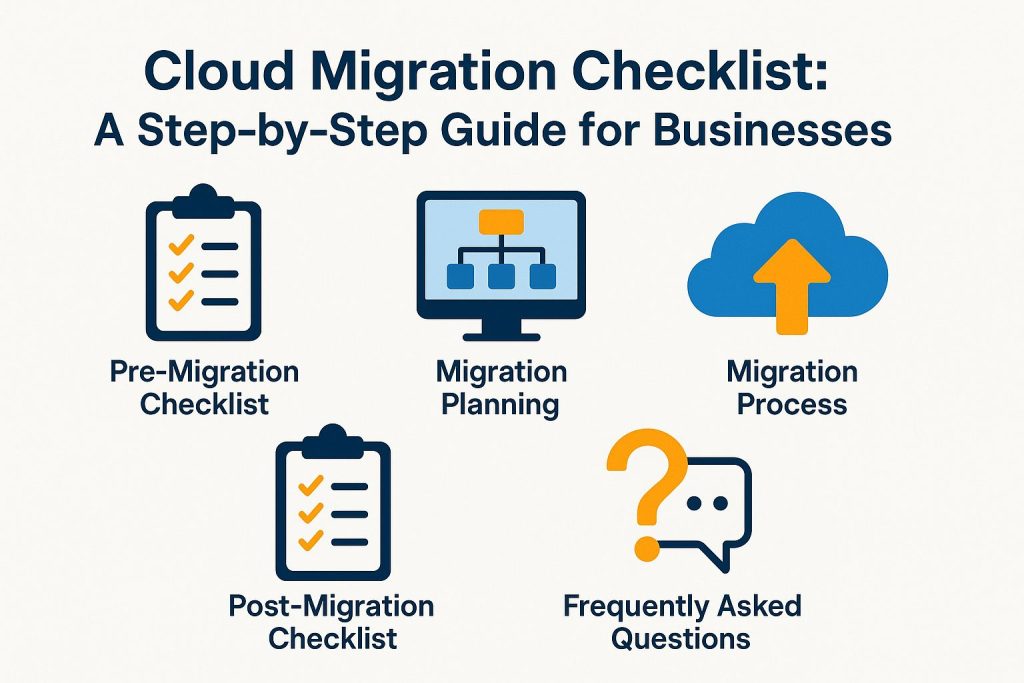Cloud IT Services in Asheville: Migration Best Practices
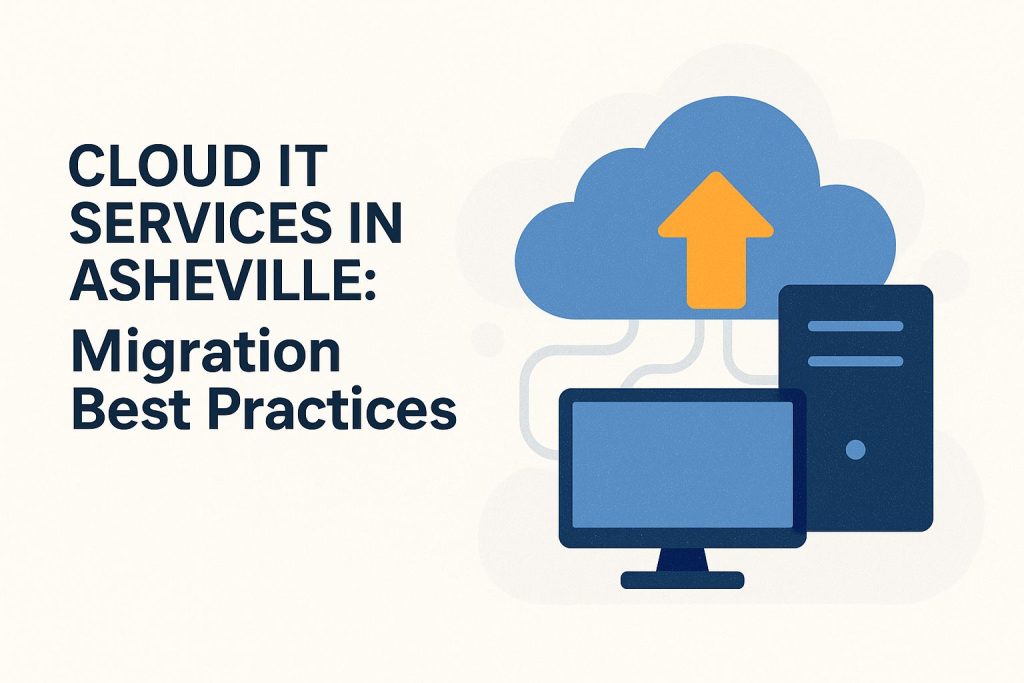
Organizations in Asheville are adopting cloud IT services. Migration can be complex. Understanding cloud migration is essential. It helps maximize efficiency and protect data integrity. This article covers planning, best practices, and post-migration strategies. These insights help businesses transition to the cloud successfully. The journey toward a streamlined cloud infrastructure is just beginning, promising significant rewards for those who navigate it effectively.
Understanding Migration
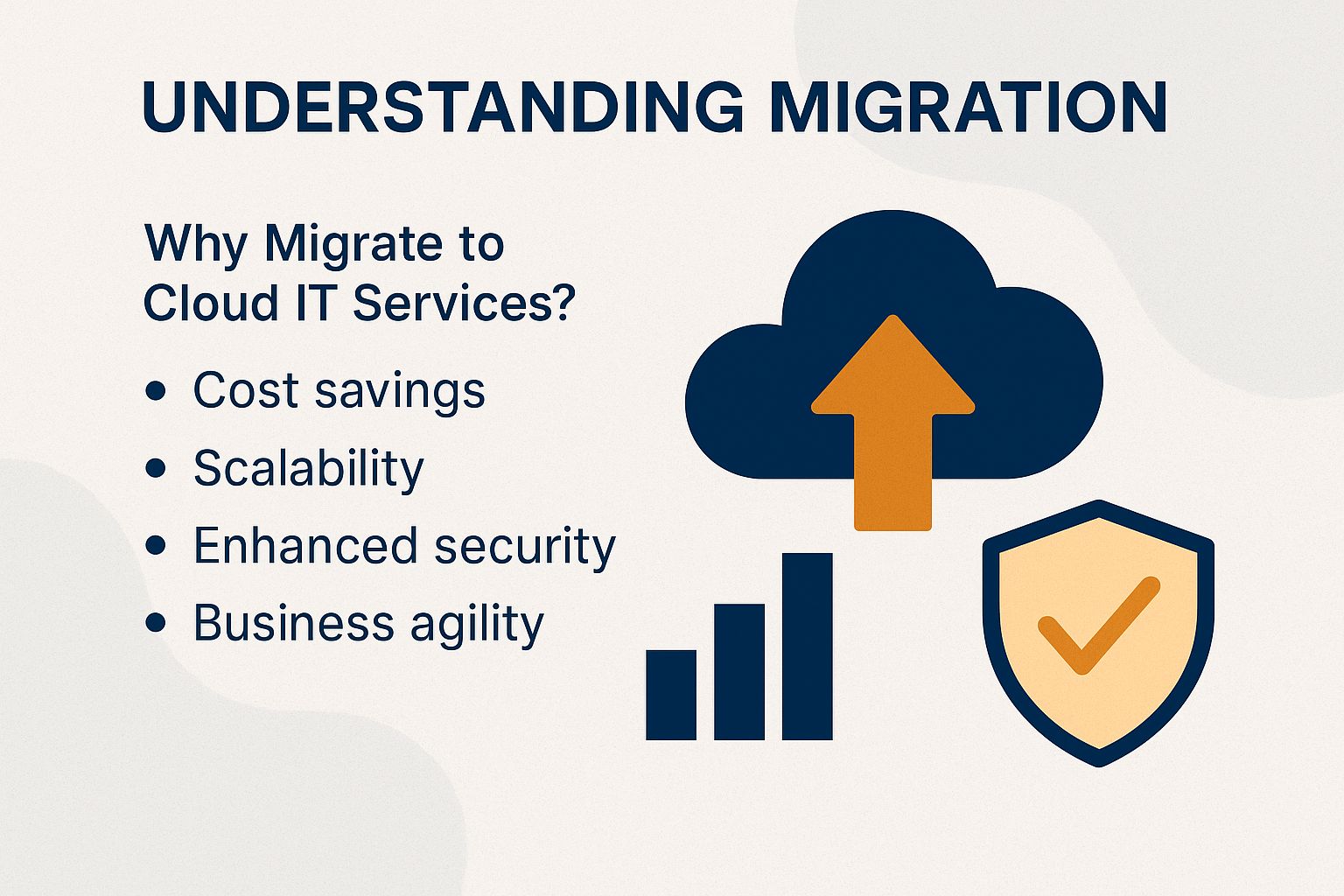
Migrating to cloud IT services is a strategic decision. It involves transferring data, applications, and workloads to cloud environments for better integration.
This process needs careful planning and execution. This ensures a smooth transition and maximizes benefits.
Why Migrate to Cloud IT Services?
Migrating to the cloud offers advantages like cost efficiency, scalability, IT modernization, and improved disaster recovery.
For example, companies often see a 30% reduction in IT costs after migrating to the cloud, resulting in significant annual savings. A startup using AWS for rapid growth can leverage services like EC2 for computing power and S3 for storage, allowing seamless resource adjustment based on fluctuating demand. A related insight is that cloud migration in Asheville is made easy with local experts.
Cloud platforms also improve disaster recovery efforts; businesses can take advantage of automated backups and geo-redundancy features that minimize downtime during disruptions. This comprehensive approach not only reduces costs but also encourages innovation and agility within organizations.
Planning Your Migration
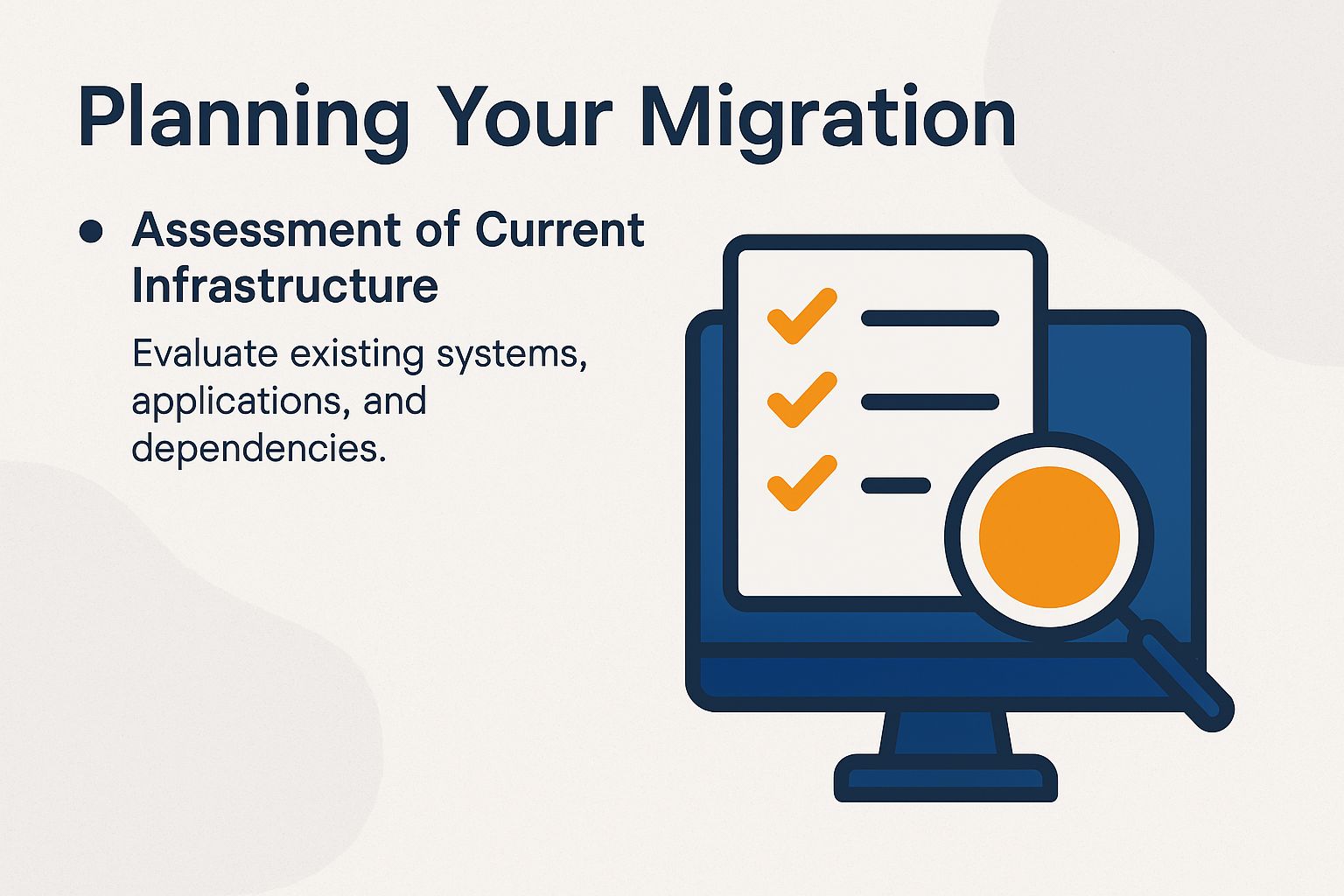
Effective migration planning commences with a thorough assessment of the current IT infrastructure and cloud architecture to identify the most suitable migration strategy and cloud readiness. For those seeking to streamline this process, our cloud migration checklist provides a step-by-step guide, ensuring no essential step is overlooked.
Assessment of Current Infrastructure
Assessing the current IT infrastructure involves a thorough analysis of hardware, software, and service dependencies to develop a migration roadmap. Start by inventorying existing assets. Use tools like Spiceworks to catalog hardware and software.
Following the inventory, it is essential to evaluate application dependencies through Dependency Mapping, which provides insight into how various systems interact with one another. Identifying key performance metrics-such as uptime and response time-is critical, as these metrics will facilitate the measurement of success following the migration.
This structured approach helps organizations understand their infrastructure. This ensures a smooth transition to new systems.
Best Practices for Migration
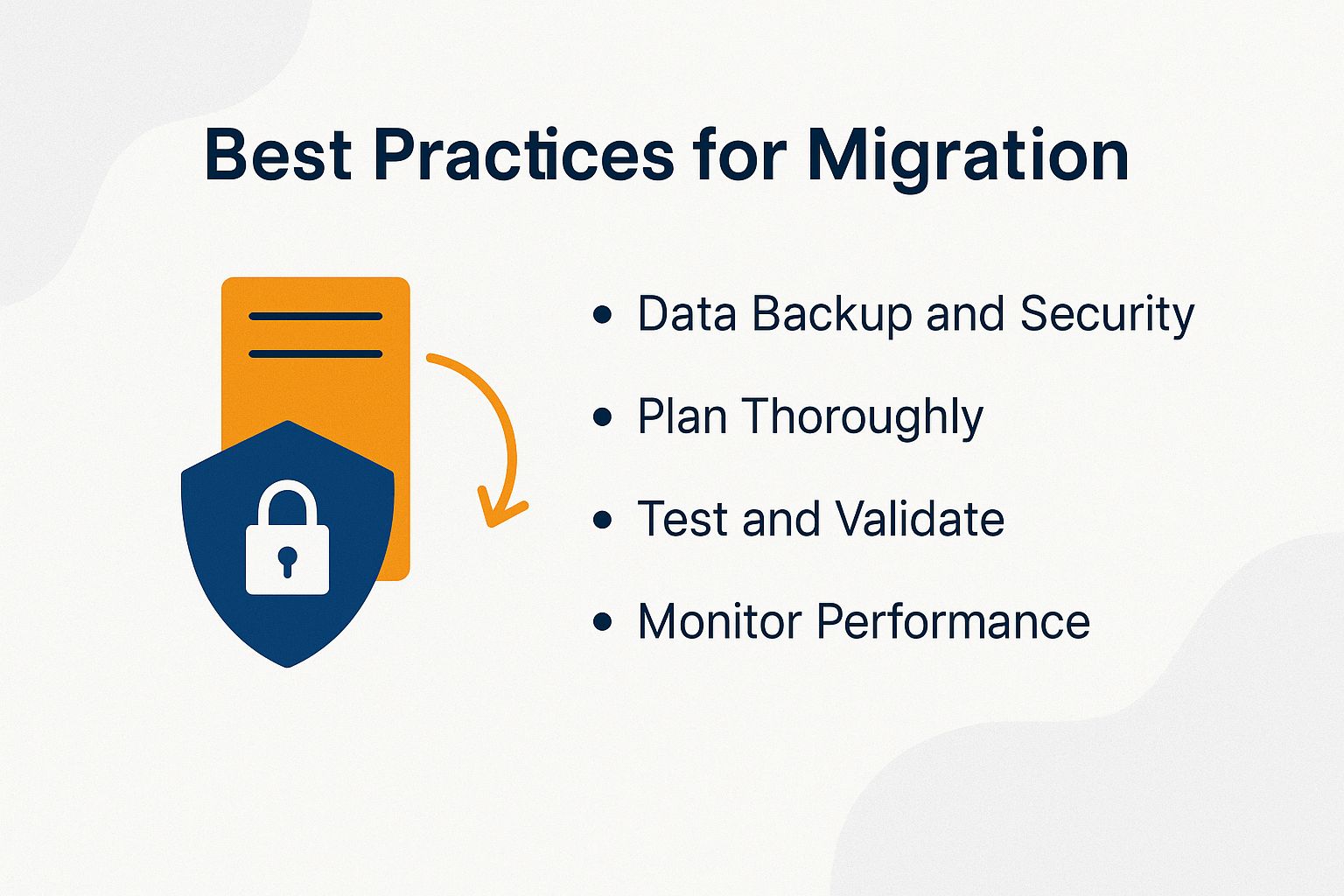
Best practices reduce migration risks. It helps ensure a smooth transition to the cloud and supports data management and security. For businesses preparing for this crucial step, exploring a comprehensive cloud migration checklist & guide provides essential insights to facilitate the process.
Data Backup and Security
Backup solutions and security measures are critical during migration. They protect against data loss and unauthorized access, providing a reliable foundation for business continuity.
Implementing a robust backup strategy is essential, beginning with the 3-2-1 backup rule: maintaining three copies of data on two different media types, with one copy stored offsite. Utilizing encryption tools such as AWS Key Management Service (KMS) can significantly enhance data security during transit and at rest.
Regular testing of backup processes is vital. For example, a company experienced data loss during a migration, showing the need for recovery plan verification and performance optimization through agile methodologies.
Organizations can reduce risks and keep data safe during migration.
Post-Migration Strategies
After migration, develop strategies to maintain operations and enhance performance.
Start by monitoring system performance with tools like Datadog. It provides real-time analytics and alerts for issues. Concurrently, facilitating user training sessions is crucial to familiarize employees with the new system; platforms like Loom can be employed to create instructional videos.
Regular feedback surveys help assess user satisfaction and find areas to improve. This approach not only enhances user adoption but also significantly reduces the risk of operational disruptions during the post-migration phase.
Frequently Asked Questions
1. What are some best practices for migrating to cloud IT services in Asheville?
Best practices include: 1. Research providers, 2. Audit IT, 3. Create a migration plan, 4. Ensure communication.
2. How can I ensure a smooth and successful migration to cloud IT services in Asheville?
Ensure a smooth migration by: 1. Understanding IT, 2. Choosing a reliable provider, 3. Conducting testing and training, 4. Having a backup plan.
3. Are there any potential challenges to migrating to cloud IT services and managed services in Asheville?
Yes, challenges exist when migrating to cloud IT services in Asheville. These include compatibility issues, data security concerns, and possible downtime during the migration process. However, with proper planning and preparation, these challenges can be minimized or overcome.
4. What are some key factors to consider when choosing a cloud IT service provider in Asheville?
Key factors when choosing a cloud IT service provider in Asheville are: 1. Experience and expertise, 2. Pricing and services, 3. Track record and customer reviews, 4. Ability to meet your business needs.
5. How important is it to involve all stakeholders in the migration process?
Involve all stakeholders in the migration process. This helps with communication and addresses any concerns that may arise.
6. Can I migrate all of my IT services to the cloud at once?
Instead of migrating all IT services at once, take a phased approach. This allows for proper testing and troubleshooting, as well as minimizing potential downtime and disruptions to daily operations. It also allows for a smoother transition and easier management of any issues that may arise.
